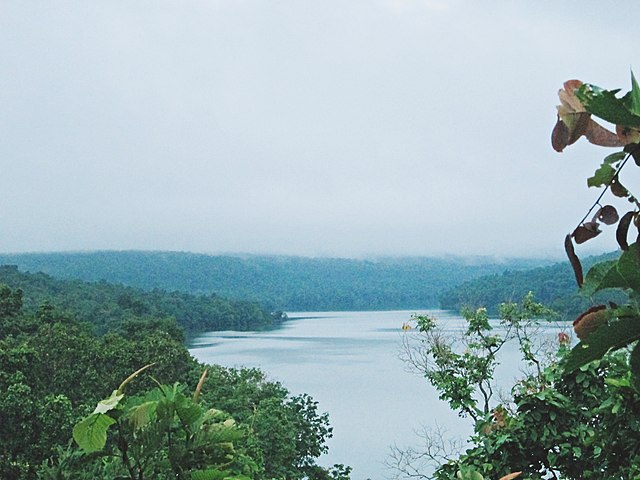
Thammasat University students are cordially invited to participate in a free Zoom webinar on Saturday, 14 August 2021 starting at 1pm Bangkok time on Reimagining Creative Cities in Twenty-First Century Asia.
The Thammasat University Library collection includes several books about different aspects of creative cities.
The 14 August event will include a book presentation of Re-imagining creative cities in twenty-first century Asia, which may be borrowed by TU students through the TU Library Interlibrary Loan (ILL) service.
For further information or with any questions, kindly write to any of these email addresses:
Xin.gu@monash.edu
michaelkholim@gmail.com
k.chayamarit@unesco.org
The webinar is presented by The United Nations Educational, Scientific and Cultural Organization (UNESCO) as part of Thailand’s International Creative Economy Week, co-sponsored by UNESCO Bangkok Office and the Creative Economy Agency (CEA), a public organization founded to promote the creative economy as the driving force to a balanced and sustainable economy.
The CEA is based at the Grand Postal Building, Charoenkrung Road, Bangrak, Bangkok.
The UNESCO Creative Cities Network (UCCN) was launched in 2004 to promote cooperation among cities which recognized creativity as a major factor in their urban development
The network aims to foster mutual international cooperation with and between member cities committed to invest in creativity for sustainable urban development, social inclusion and cultural vibrancy.
Two years ago, UNESCO newly designated Bangkok and Sukhothai as creative cities, joining Phuket as a creative city of gastronomy and Chiang Mai as a creative city of crafts and folk art.
Bangkok was named as a creative city of design and Sukhothai a creative city of crafts and folk art.
The 14 August book presentation, according to its website,
will focus on the context of Thai creative cities, the process they went through, the challenges they faced, how these were overcome, and the benefits they gained from becoming a member of the UNESCO Creative Cities Network. The forum/ panel discussion will also look at (new) policy initiatives that can be considered or reconsidered, as these creative cities move forward post-pandemic.
About the book
This book responds to the lack of Asian representation in creative cities literature. It aims to use the creative cities paradigm as part of a wider process involving first, a rapid deindustrialization in Asia that has left a void for new development models, resulting in a popular uptake of cultural economies in Asian cities; and second, the congruence and conflicts of traditional and modern cultural values leading to a necessary re-interpretation and re-imagination of cities as places for cultural production and cultural consumption. Focusing on the ‘Asian century’, it seeks to recognize and highlight the rapid rise of these cities and how they have stepped up to the challenge of transforming and regenerating themselves. The book aims to re-define what it means to be an Asian creative city and generate more dialogue and new debate around different urban issues.

There will also be a panel discussion in Thai language on Re-imagining Creative Cities through the eyes and hands of the new generation in Thailand.
The discussion will feature young creative practitioners from Ubon Ratchathani, Buriram, Sakhon Nakhon, Bangkok, and Chiang Mai. According to the Bangkok Post, Bangkok’s status as a creative city should encourage the local and national economy.
The UNESCO website explains,
Why Creativity? Why Cities?
Urban areas are today’s principal breeding grounds for the development of new strategies, policies and initiatives aimed at making culture and creativity a driving force for sustainable development and urban regeneration through the stimulation of growth and innovation and the promotion of social cohesion, citizen well-being and inter-cultural dialogue. In this way cities respond to the major challenges with which they are confronted, such as the economic crisis, environmental impacts, demographic growth and social tensions.
Not to mention that cities are today home to more than half the world’s population and three quarters of its economic activity, including a large share of the creative economy.
The crucial role of cities in promoting sustainable development focused on people and the respect of human rights is notably recognised in the 2030 Agenda for Sustainable Development which includes among its 17 goals a specific objective to ‘make cities and human settlements inclusive, safe, resilient and sustainable’ and identifies culture and creativity as one of the essential levers for action in this context.
It is first and foremost at local level that culture and creativity are lived and practised on a daily basis. It is therefore by stimulating cultural industries, supporting creation, promoting citizen and cultural participation and approaching the public sphere with a new perspective that public authorities, in cooperation with the private sector and civil society, can make the difference and support a more sustainable urban development suited to the practical needs of the local population.
In this context, cooperation and the sharing of experience and knowledge is crucial for making creativity a lever for urban development and conceiving of new solutions to tackle common challenges. In this regard, UNESCO’s Creative Cities Network offers unparalleled opportunities for cities to draw on peer learning processes and collaborative projects in order to fully capitalize on their creative assets and use this as a basis for building sustainable, inclusive and balanced development in economic, cultural, environmental and social terms.

A mission statement declares:
Launched in 2004, the UNESCO Creative Cities Network (UCCN) aims to strengthen cooperation with and among cities that have recognized creativity as a strategic factor of sustainable development as regards economic, social, cultural and environmental aspects.
By joining the Network, cities acknowledge their commitment to sharing best practices, developing partnerships that promote creativity and the cultural industries, strengthening participation in cultural life and integrating culture in urban development plans.
The Network further commits to supporting the United Nations frameworks, particularly the 2030 Agenda for Sustainable Development.
The UNESCO Creative Cities Network covers seven creative fields: Crafts and Folk Art, Design, Film, Gastronomy, Literature, Media Arts, and Music.
Objectives
The UNESCO Creative Cities Network aims to:
- strengthen international cooperation between cities that have recognized creativity as a strategic factor of their sustainable development;
- stimulate and enhance initiatives led by member cities to make creativity an essential component of urban development, notably through partnerships involving the public and private sectors and civil society.
- strengthen the creation, production, distribution and dissemination of cultural activities, goods and services;
- develop hubs of creativity and innovation and broaden opportunities for creators and professionals in the cultural sector;
- improve access to and participation in cultural life as well as the enjoyment of cultural goods and services, notably for marginalized or vulnerable groups and individuals;
- fully integrate culture and creativity into local development strategies and plans.
Areas of action
The objectives of the UNESCO Creative Cities Network are implemented both at the level of the member cities and at the international level, notably through the following areas of action:
- sharing experiences, knowledge and best practices;
- pilot projects, partnerships and initiatives associating the public and private sectors, and civil society;
- professional and artistic exchange programmes and networks;
- studies, research and evaluations on the experience of the Creative Cities;
- policies and measures for sustainable urban development;
- communication and awareness raising activities.

(All images courtesy of Wikimedia Commons)
